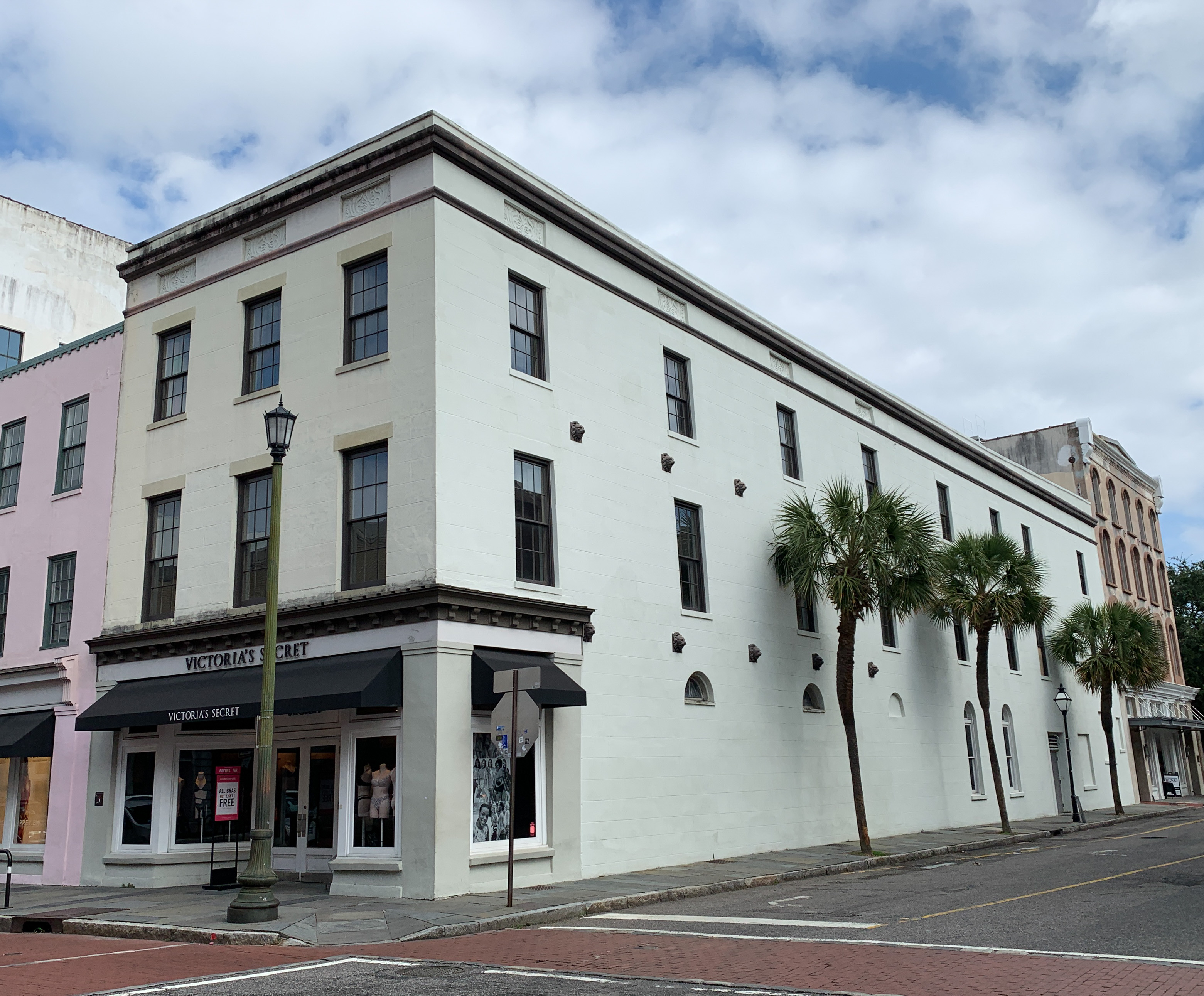Moses Levy Building on:
[Wikipedia]
[Google]
[Amazon]
 The Moses Levy Building is a
The Moses Levy Building is a
 The Moses Levy Building is a
The Moses Levy Building is a Greek Revival
Greek Revival architecture is a architectural style, style that began in the middle of the 18th century but which particularly flourished in the late 18th and early 19th centuries, predominantly in northern Europe, the United States, and Canada, ...
commercial structure located at 254 King St., Charleston, South Carolina
Charleston is the List of municipalities in South Carolina, most populous city in the U.S. state of South Carolina. The city lies just south of the geographical midpoint of South Carolina's coastline on Charleston Harbor, an inlet of the Atla ...
.
In April 1838, a fire
Fire is the rapid oxidation of a fuel in the exothermic chemical process of combustion, releasing heat, light, and various reaction Product (chemistry), products.
Flames, the most visible portion of the fire, are produced in the combustion re ...
swept through the neighborhood around 254 King St. and destroyed a house belonging to Moses Levy. In June 1839, the South Carolina General Assembly
The South Carolina General Assembly, also called the South Carolina Legislature, is the state legislature of the U.S. state of South Carolina. The legislature is bicameral and consists of the lower South Carolina House of Representatives and ...
created a program which financed the rebuilding of the area, and Moses Levy secured a "fire loan" to construct a three-story masonry building at the site. Levy died in 1839, and the house remained in his estate for fifty years until it was bought by two of his granddaughters. On March 3, 1909, seventy years after it was built, the house was sold outside the Levy family to Marx Lazarus.
Throughout the history of the building, it has housed commercial
Commercial may refer to:
* (adjective for) commerce, a system of voluntary exchange of products and services
** (adjective for) trade, the trading of something of economic value such as goods, services, information or money
* a dose of advertising ...
interests, starting with a jewelry
Jewellery (or jewelry in American English) consists of decorative items worn for personal adornment such as brooches, ring (jewellery), rings, necklaces, earrings, pendants, bracelets, and cufflinks. Jewellery may be attached to the body or the ...
. Around the turn of the twentieth century, rooms on the second floor were also used for meeting spaces by various organizations.
The three-story building is typical of the Greek Revival style, commercial buildings erected after the fire of 1838. It has a simple parapet
A parapet is a barrier that is an upward extension of a wall at the edge of a roof, terrace, balcony, walkway or other structure. The word comes ultimately from the Italian ''parapetto'' (''parare'' 'to cover/defend' and ''petto'' 'chest/brea ...
along the roofline and cast iron
Cast iron is a class of iron–carbon alloys with a carbon content of more than 2% and silicon content around 1–3%. Its usefulness derives from its relatively low melting temperature. The alloying elements determine the form in which its car ...
grills inset near of the top of the front façade
A façade or facade (; ) is generally the front part or exterior of a building. It is a loanword from the French language, French (), which means "frontage" or "face".
In architecture, the façade of a building is often the most important asp ...
. The exterior stucco
Stucco or render is a construction material made of aggregates, a binder, and water. Stucco is applied wet and hardens to a very dense solid. It is used as a decorative coating for walls and ceilings, exterior walls, and as a sculptural and ...
was scored to resemble stonework. The south side of the building has earthquake bolts with decorative lions head covers; the earthquake bolts repaired damage from the Great Earthquake of 1886.
References
{{Coord, 32, 46, 54.93, N, 79, 55, 59.92, W, display=title Buildings and structures in Charleston, South Carolina Greek Revival architecture in South Carolina 1830s establishments in South Carolina Commercial buildings completed in 1838